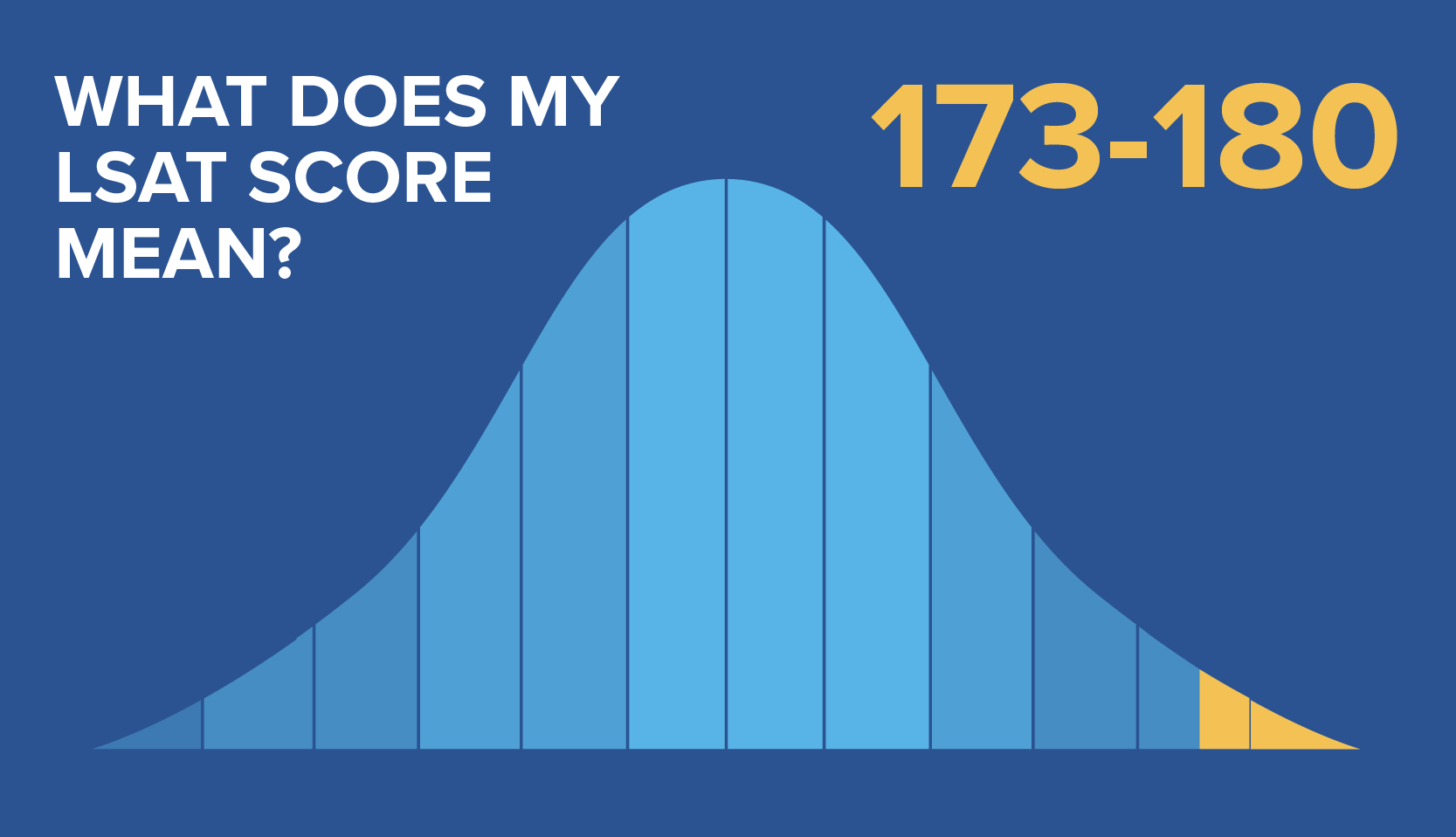
Because sometimes it’s true that LSAT instructors cannot see outside their LSAT bubbles, watching the Oscars last night I was struck how Academy voters selecting a Best Picture winner from a list of nominees isn’t all that different from an LSAT taker selecting a winner from a set of answer choices. In both cases, there are only a few choices to pick from. In both cases, it’s a hard choice. And in both cases, it’s pretty clear that a large percentage of people don’t quite understand every choice available to them.
But there are a few important and obvious differences, too. One, obviously: there’s no right answer for Academy voters; there is definitely a right answer on the LSAT. Academy voters get to live in this fun world of “maybe.” Maybe Green Book really is the feel-good movie our torn country needs. Or, maybe it’s a reductive take on a systemic and ongoing issue, made by at least one problematic screenwriter and at least one problematic director and at least one problematic actor all undergoing a problematic process. Who can say which is right? Not the case on the LSAT; the test writers, not to mention core tenets of logic, get to say which is right.
Another difference, no duh: with the Oscars, voters get to take months to watch the movies, discuss them with fellow Academy members, track the prognostications, and cetera. On the LSAT, you have no more than a couple minutes to make a selection, on your own.
A final distinction that will surprise no one: Even though it’s clear that both Oscar voters and LSAT takers don’t understand a few choices at their disposal, Oscar voters don’t get penalized for not understanding a film’s meaning or why certain films offend people. Oscar voters get to blithely ignore some movies’ problems. As an LSAT taker, you can’t really ignore the answer choices you don’t understand.
So, LSAT taker: how are you going to handle the fact that you have to select the one correct answer, quickly, despite not fully understanding some of your choices? How are you going to unhesitatingly choose the correct answer, and not end up selecting — as the Oscar voters did — the equivalent of, like, Driving Ms. Daisy 2: This Time, Daisy’s in the Drivers Seat? Well, this is where the LSAT instructors, living in our LSAT bubbles, can help. Let’s discuss some of the most commonly confusing answer choices, and how to assess them.
Really Confusingly Worded Answer Choices
The Problem: One of the LSAT’s favorite tricks — some would say its only trick — is to take a simple idea and express it in the most incomprehensible way possible (shouts to all my fellow English majors and law review peoples who learned to do the same thing). The LSAT does this all the time in the answer choices to Logical Reasoning and Reading Comp questions. Looking over a Weaken question from LR recently, I was struck by this answer choice: “There’s no reason to suppose that most of the ingredients in laundry detergents not advertised as ecologically friendly harm the environment significantly.” It’s like you’re Frances McDormand searching for her daughter’s murderer — to take another recent Oscar winner — with the crazy path you have to take trying figure out what the heck that answer choice is saying. (Spoiler alert) This answer choice is wrong, but many select it simply because it’s confusing.
Let’s break down all the tricks the LSAT used here. First, it used this sort of unclear introductory phrase “there’s no reason to suppose.” That phrase negates the verb in this technically simple (but nonetheless confounding) subject-verb-object sentence. Except the verb — “harm” — doesn’t appear until like a million words later in the sentence, at which point you maybe forgot the whole “no reason to suppose” part. Second, it made the subject of the sentence, “most ingredients,” as hard to decipher as humanly possible. It’s like playing a game of 20 questions trying to figure out what kind of ingredients they’re talking about. So they’re ingredients? “Yes.” Are we talking about all the ingredients? “No.” Most of them? “Yes.” Are these the ingredients in a sandwich? “No.” The ingredients in a soup? “No.” The ingredients in a healthy elixir that will cause the symptoms of a hangover to abate? “No.” The ingredients in … idk … [looks in laundry room, says the first thing she sees] … laundry detergent? “Yes, actually.” Ooh. Are they most of the ingredients in laundry detergent that’s good for the environment? “No.” In laundry detergent that’s not good for the environment? “Well, technically no.” Most of the ingredients in laundry detergent that’s not advertised as being ecologically friendly? “Bingo.” Third, it splits the verb and adverb. It almost sneaks in at the last second that we’re not just talking about any kind of harm, but significant harm.
But, despite these tricks, this answer choice expresses a simple idea. So how do get from “no reason to suppose that most of the ingredients in laundry detergents not advertised as ecologically friendly harm the environment significantly” to the simple idea? Let’s talk solutions.
The Solution: You have to rephrase these answer choices into words you would actually use. This takes time and energy — two things in short supply on the LSAT, to be sure — but it’s an important skill to develop over the course of your LSAT studies.
So first, get rid of all the fluff words. The words that you’d use to pad the word count on college essays. So, unless you’re the fanciest little twit in the world and would actually use the phrase “there’s no reason to suppose” in your day-to-day conversations, get rid of that phrase. Remember, that phrase negates the verb. So delete “there’s no reason to suppose” and just change “harm” into “don’t harm.” Then, simplify that confusing noun “most of the ingredients in laundry detergents not advertised as ecologically friendly.” OK, so there’s the special kind of laundry detergent that costs a few dollars more that promises to not destroy the environment, and there’s the cheaper, I guess, normal laundry detergent? OK, cool, let’s just call the latter “normal laundry detergent.” Finally, let’s pair up the verb and adverb, so now it’s “don’t significantly harm.” Or, simpler still: “don’t really harm.”
Our simplified sentence: “Most of the ingredients in normal laundry detergents don’t really harm the environment.” That’s a lot easier to understand. And once you understand that answer choice, there’s no reason to suppose that you’ll get the question wrong by selecting it.
And, by the way, you can and should simply other things on the LSAT, too. You can rephrase the conclusions and premises in arguments, too. For instance, the conclusion to the argument on this question was, “Therefore, there is no reason to suppose that laundry detergents advertised as ecologically friendly are less damaging to the environment than other laundry detergents are.” That’s confusing, but using the same tricks we discussed, we can simplify that to: “Eco-friendly laundry detergents damage the environment as much as normal laundry detergents.”
Another Solution: If you’re really well versed on what distinguishes right answers from wrong answers, you can eliminate the above answer choice even more quickly.
Remember how the conclusion was: “Eco-friendly laundry detergents damage the environment as much as normal laundry detergents”? Just noting that this conclusion made a comparison between eco-friendly laundry detergents and normal laundry detergents is enough to eliminate the confusing answer choice.
When a conclusion makes a comparison, you can bet that it’s a bad comparison — that we don’t have enough information to conclude that eco-friendly laundry detergents damage the environment as much as normal detergents. If we’re weakening that comparison, the right answer will provide some facts that make eco-friendly detergents less damaging than normal detergents. In other words, the right answer has to also compare eco-friendly detergents and normal detergents.
The confusing answer choice is almost certainly wrong because it’s not making a comparison — it only states a fact about normal detergents, but doesn’t compare those normal detergents to other detergents. Sure, most ingredients in normal detergents don’t really harm the environment. But doesn’t tell us anything about whether most ingredients in eco-friendly detergents harm the environment any more or less.
So anticipating what you’re looking for can help you quickly eliminate certain answer choices, even if you don’t fully understand them.
“Fails to Consider” Answer Choices
The Problem: Flaw questions are among the most common questions on the LSAT, and they have a sizable impact on your LR score. So it’s quite annoying that the incorrect answer choices on these questions are among the hardest to eliminate. There are a number of confusing answer choices on Flaw questions, but I want to focus on one vexing kind in particular: the ones that state the argument is flawed because the author “fails to consider” or “overlooks” some odd thing or another.
These answer choices are tough to assess, because they’re almost always true, technically. They almost always bring up something that the author doesn’t consider or look into or discuss. So why are some of these answer choices right and others wrong?
Well, let’s start with a flawed argument that’s not at all inspired by my current anxiety levels regarding the 2020 election:
Essayist: Democratic primary voters in the upcoming election are considering between many candidates in a crowded field. Since these voters shouldn’t vote for Tammy Globuchar, who has been shown to be a domineering and cruel boss to her staff, and since these voters shouldn’t vote for Tory Cooker, who is a bit too beholden to corporate interests, and since these voters shouldn’t vote for Vernie Flanders, whose candidacy led to a schism in the Democratic base four years ago, voters who want the strongest candidate for the Democratic Party must cast their vote for Pamela Parris, the charismatic Californian Senator.
And let’s lay out three “fails to consider” answer choices:
(A) The essayist fails to consider that voters who would prefer a weak and feckless candidate for the Democratic Party should vote for another candidate.
(B) The essayist fails to consider that the reports on Tammy Globuchar’s behavior may be inaccurate.
(C) The essayist fails to consider that there may be additional candidates in the crowded Democatic primary field.
These are all true statements. The essayist did fail to mention any of these potential issues. So why is one right and the other two wrong? Let’s turn to the solution.
The Solution: If one of these “fails to consider” answer choices is going to be the right answer, whatever the author fails to consider must, if true, weaken the conclusion of argument. That’s the solution to this conundrum.
A lot of these “fails to consider” answer choices are wrong because they don’t weaken anything in the argument. They bring up an issue that’s simply irrelevant to the argument. Take (A) — that the essayist “fails to consider that voters who would prefer a weak and feckless candidate for the Democratic Party should vote for another candidate.” This wasn’t an argument about people who want the Democratic candidate to be bad. As the conclusion makes clear, this is an argument about the people who “want the strongest candidate for the Democratic Party.” The beliefs and desires of a totally different group of people have no impact on what these people should do. To make a good argument, it’s not a requirement that you mention totally irrelevant information. So it doesn’t matter that the author “fails to consider” that irrelevant issue.
A lot of these sorts of answer choices are wrong because they would weaken a premise of the argument, not the conclusion of that argument. Take (B) — that the essayist “fails to consider that the reports on Tammy Globuchar’s behavior may be inaccurate.” Tammy’s bad behavior was a premise to the argument. Notice how it follows the classic premise word “since.” When assessing the validity of an argument, we have to take the premises “for granted”; in other words, we have to assume that they are true. So on a Flaw question, we have to assume that Tammy is actually mean to her staff. Any answer choice that says the author “fails to consider” that a premise could be false is wrong, full stop.
That leaves us with (C) — that the essayist “fails to consider that there may be additional candidates in the crowded Democatic primary field.” This is the only one that, if true, would weaken the argument’s conclusion. If it were true that there are other candidates in the Democratic primary field — like, I don’t know, Pat Luttigieg, Julio Mastro, Jim Mulaney, Belizabeth Warren, Kristen Billabong — that would weaken the claim that Democratic voters have to elect Pamela Parris. There might be others who would be a stronger candidate than her. Since it would substantially weaken the argument’s conclusion, it’s the correct answer.
————
Over the course of studying for the LSAT, you will encounter many things that you don’t quite understand, answer choices very much included. But unlike Oscar voters, don’t simply ignore things that confuse you. Engage with them. Try to untangle their knotty syntax and to parse any unfamiliar words. Remember the characteristics that right answers should have, and eliminate any answer choice that lacks those characteristics. If you do that, you’ll — in the words of one jilted Oscar nominee — do the right thing.




